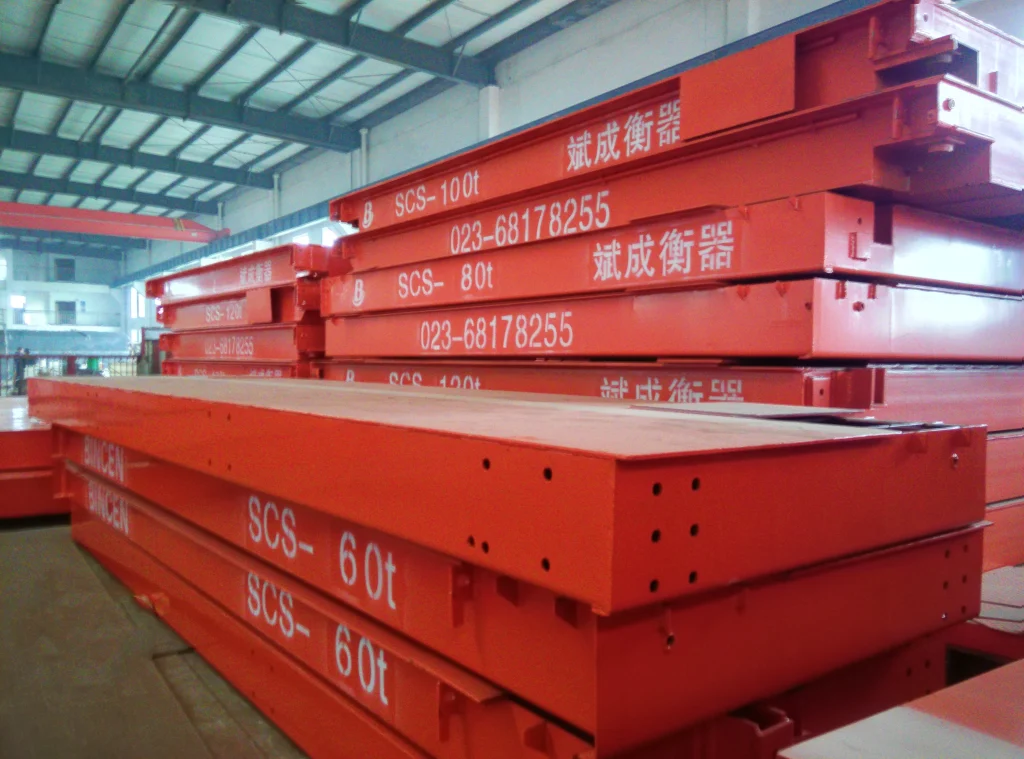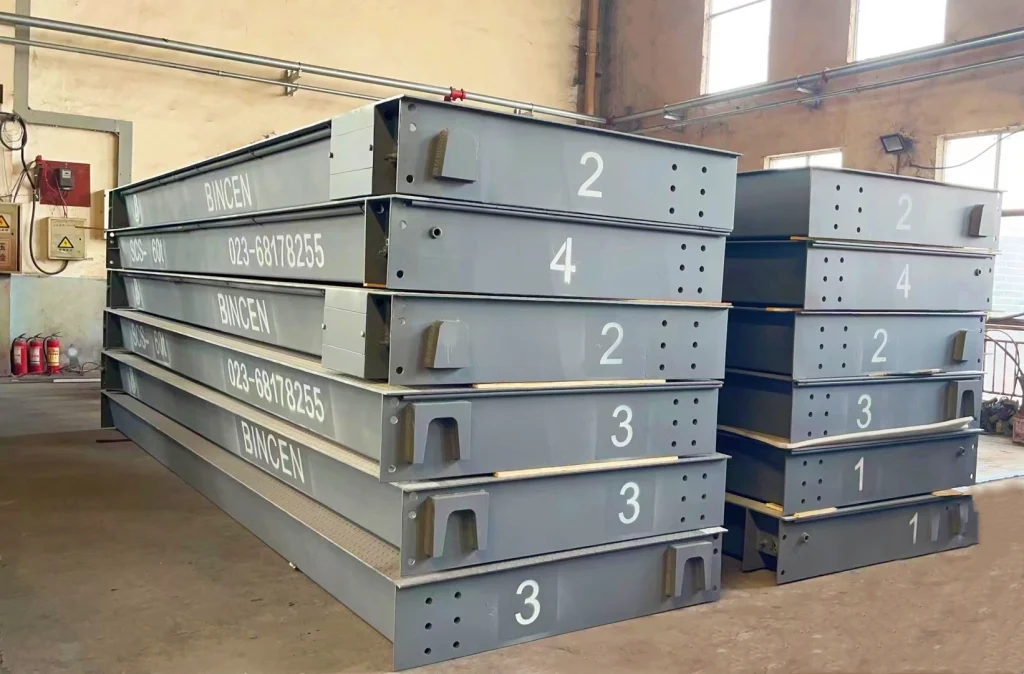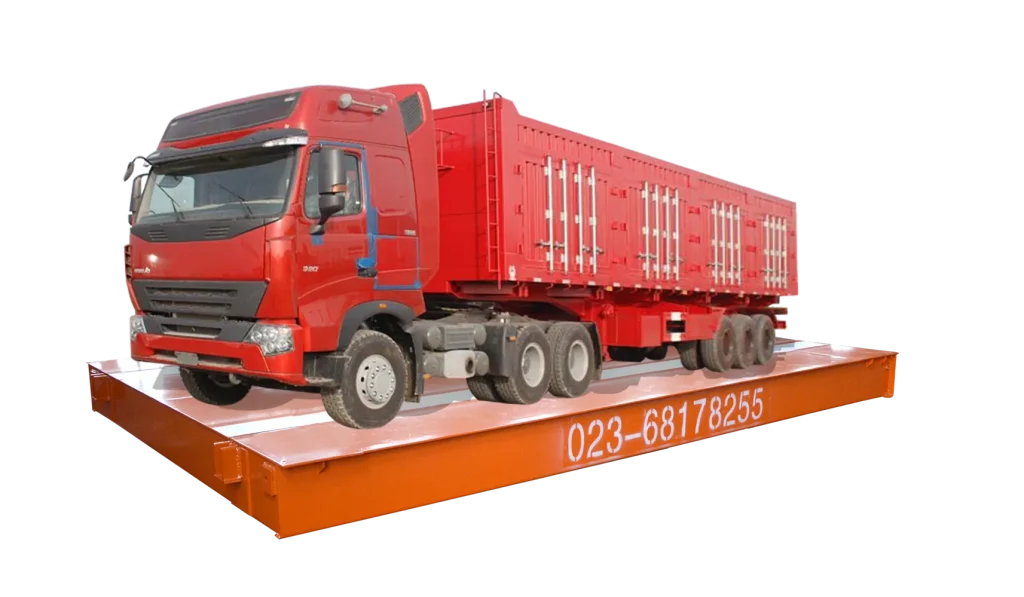Ensuring Safe and Efficient Transportation of Electronic Lorry Weighbridges
Electronic lorry weighbridges are critical components in the logistics and transportation industry, ensuring accurate weight measurement for efficient operations. However, transporting these sensitive devices requires careful planning and execution to prevent damage and maintain their performance. Bincen deeply introduces the essential aspects of Electronic Lorry weighbridge transportation, covering general requirements and precautions, available transportation methods, and crucial measures to prevent damage during transit. By understanding these factors, stakeholders can effectively safeguard their weighbridges and ensure uninterrupted operations.

General Requirements and Precautions for Transporting Electronic Lorry Weighbridges?
An electronic lorry weighbridge is a device used to measure the weight of vehicles. It is widely used in logistics, transportation, and warehousing industries. When transporting an electronic lorry weighbridge, specific requirements and precautions must be followed to ensure the safety and accuracy of the equipment.
Pre-Transportation Preparation
- Inspect Equipment Integrity: Before transportation, all components of the electronic lorry weighbridge should be thoroughly inspected to ensure there is no damage or missing parts. A thorough inspection is crucial to identify any potential issues that might arise during transportation, ensuring that the device arrives at its destination in working condition.
- Proper Packaging: Appropriate packaging materials and protective measures should be used to protect the sensitive electronic components from shock and impact during transportation. Since electronic lorry weighbridges contain delicate electronic components, proper packaging is essential to prevent any damage that could affect the device’s performance.
- Marking and Labeling: The packaging boxes should be clearly marked, indicating fragile items, the center of gravity, and handling precautions. Clear markings help handlers understand the proper way to handle the package and avoid any accidents.
Precautions During Transportation
- Avoid Violent Vibration: Measures should be taken to reduce vibration during transportation to prevent internal components from loosening or becoming damaged. Excessive vibration can cause internal components to shift or become damaged, affecting the accuracy of the weighbridge.
- Prevent Moisture and Extreme Temperatures: Keep the packaging dry and avoid exposing the equipment to high or low temperatures, as this can affect the performance of the electronic components. Moisture and extreme temperatures can damage electronic components and affect the overall performance of the weighbridge.
- Handle with Care: The weighbridge should be handled gently to avoid drops or collisions. Rough handling can cause physical damage to the device, making it unusable or inaccurate.
Inspection After Unloading and Installation
- Check Equipment Condition: After unloading, the electronic lorry weighbridge should be inspected again for any damage or displacement. A final inspection ensures that the device has not been damaged during transportation.
- Calibrate Equipment: Necessary calibration should be performed after installation to ensure measurement accuracy. Calibration is essential to ensure that the weighbridge provides accurate weight readings.
In summary, transporting an electronic lorry weighbridge requires careful attention to detail to protect the equipment and ensure its continued accurate operation. By following these guidelines, organizations can minimize the risk of damage during transportation and maintain the reliability of their weighing equipment.

What Are the Transportation Methods of Electronic Lorry Weighbridge?
The transportation method for an electronic lorry weighbridge largely depends on its size, weight, and specific transportation conditions. Based on available information, here are some common transportation methods:
1. Containerized Shipping:
Electronic lorry weighbridges can be designed to fit into standard 20-foot or 40-foot shipping containers. This method is suitable for both ocean and long-distance overland transportation, especially when the weighbridge needs to cross international borders.
- Advantages: Cost-effective for long distances, protection from elements, standardized handling procedures.
- Considerations: Requires careful loading and securing to prevent shifting during transit, and potential customs clearance delays for international shipments.
2. Sectionalized Transportation:
For large-scale electronic lorry weighbridges, sectionalized transportation can be adopted. This involves dividing the weighbridge into several sections for transportation. This method can reduce transportation costs, improve transportation efficiency, and reduce the risk of damage during transportation.
- Advantages: Reduced overall dimensions for easier handling, potential cost savings on transportation, reduced risk of damage to a single large piece.
- Considerations: Requires precise reassembly at the destination, potential for increased labor costs.
3. Specialized Vehicle Transportation:
For weighbridges with larger dimensions or requiring special handling, specialized vehicles may be necessary for transportation. This method can provide greater protection and ensure the safety of the equipment during transportation.
- Advantages: Customized handling for unique equipment, enhanced protection against damage, often includes experienced transportation crews.
- Considerations: Higher transportation costs, and potentially longer transit times due to specialized equipment availability.
Factors to Consider When Choosing a Transportation Method
- Size and Weight: The dimensions and weight of the weighbridge will determine the type of vehicle or container required.
- Distance: The transportation distance will influence the choice between land, sea, or air transportation.
- Cost: Transportation costs should be carefully evaluated, including loading, unloading, and potential customs fees.
- Timeframe: The required delivery time will impact the choice of transportation method.
- Safety Regulations: Ensure compliance with all relevant safety regulations and transportation standards.
Note: The specific transportation method selected may vary depending on the manufacturer’s recommendations, local regulations, and the unique characteristics of the weighbridge. Of course, you can consult with a professional weighbridge manufacturer to ask what transport method they will provide or just for advice.

How to Avoid Damage to Electronic Lorry Weighbridge During Transportation?
To prevent damage to electronic lorry weighbridges during transportation, the following measures can be taken:
1. Anti-Static Handling
Electronic weighbridges contain sensitive electronic components, particularly printed circuit boards (PCBs), which are susceptible to electrostatic discharge (ESD). ESD can damage electronic components, leading to malfunctions or complete failure. To prevent ESD damage, anti-static packaging materials and gloves should be used during handling and transportation. Direct contact with sensitive components should be avoided. Anti-static measures are crucial to protect the weighbridge from electrical discharge.
2. Vibration Protection
Electronic weighbridges should be placed in their original packaging or secured with appropriate vibration-damping materials during transportation to prevent internal components from loosening or becoming damaged. Vibration can cause components to shift, leading to physical damage or misalignment. Proper vibration protection is essential to ensure the weighbridge arrives at its destination in good working condition.
3. Explosion Protection
Weighbridges used in hazardous environments require special handling to prevent the risk of explosion. If the electronic weighbridge is used in an explosion-proof system, it is essential to adhere to relevant explosion-proof regulations to ensure safety during transportation.
4. Reinforced Packaging
Proper packaging provides a protective barrier against external forces that could damage the weighbridge. Sufficient padding and cushioning materials should be used to ensure that the weighbridge does not move or collide during transportation due to bumps or vibrations.
5. Inspection and Monitoring
During transportation, a designated person should be responsible for inspecting the weighbridge’s securing and making adjustments as necessary to address any unforeseen circumstances that may arise during transit. Regular inspections help to ensure that the weighbridge remains secure and protected throughout the transportation process.
6. Avoid Harsh Environments
Avoid exposing the weighbridge to extreme temperatures, humidity, or direct sunlight, as these environmental factors can damage electronic components. Extreme conditions can cause electronic components to degrade or fail, affecting the accuracy and reliability of the weighbridge.
7. Moisture and Dust Protection
Ensure that the electronic components of the weighbridge are protected from moisture and dust, as these can affect performance and accuracy. Moisture and dust can lead to corrosion, short circuits, and other electrical problems.
By following these measures, the risk of damage to electronic lorry weighbridges during transportation can be significantly reduced, ensuring that the equipment arrives at its destination in safe and working condition and maintains its measurement accuracy.

Conclusion
Properly transporting electronic lorry weighbridges is paramount to maintaining their accuracy and longevity. By adhering to the outlined general requirements, selecting suitable transportation methods, and implementing preventive measures, organizations can significantly reduce the risk of damage during transit. Investing in careful planning and execution for weighbridge transportation is not merely an expense but a strategic investment in operational efficiency and reliability. By following these guidelines from weighbridge manufacturer Bincen, businesses can ensure their weighbridges arrive at their destination in optimal condition, ready to deliver precise weight measurements for their operations.





